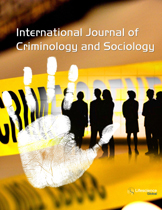ijcs
Abstract : Violence and Healing: Exploring the Power of Collective Occupations
|
|
Abstract: The effects of violence on the person are extensive, more so, for persons disabled through violence. Research in occupational therapy has shown the effectiveness of occupations in helping displaced refugees to construct new identities and navigate new ways of belonging within asylum countries. No research thus far has focussed on the role of occupation for healing in contexts of sustained violence. Aim: To explore the role of occupations in the healing journeys of people physically impaired by violence. Study Design: Qualitative; Narrative Inquiry. Methodology: Photovoice and Narrative Interviews. Data Analysis: Narrative-analytic methods were used to produce explanatory stories.Findings: These are presented with a specific focus on the impact/influence of violence on personal and societal occupational engagement and the restorative role of collective occupations within the participants’ healing journeys. The findings suggest a need to reframe violence as a collective occupation that dehumanizes, and healing as a collective process that (re)humanizes within a broader framework of Ubuntu as an interactive ethic. These findings call for a shift in focus for rehabilitation practices involving individuals disabled through violence, in contexts of sustained direct and structural violence such as South Africa. Keywords: Violence, context, disability, healing, occupation.Download Full Article |
Abstract : Juvenile Probationers, Restitution Payments, and Empathy: An Evaluation of a Restorative Justice Based Program in Northeastern Pennsylvania
|
|
Abstract: Restitution programs are widely used to hold offenders accountable for their actions while providing restoration to victims and community service. However, compliance with restitution requirements is a major problem, as reported by juvenile probation offices across the country. The Firewood Program was developed for juvenile probationers in a rural Pennsylvania county to improve the completion rate of restitution payments to victims and provide community service. This study examines the effectiveness of the restitution program, which was measured as an increase in the offender’s level of empathy and shorter completion times of restitution payments. Keywords: Restitution, community corrections, restorative justice, juvenile probation.Download Full Article |
Abstract : An Analysis of Coherence of Chinese Courtroom Discourse
|
|
Abstract: Coherence, the relationships which link the meanings of utterances in a discourse or of the sentences in a text, is realized on two levels: linear or sequential coherence and global semantic structure. Taking the audio recording transcripts of two trials (one criminal and one civil) as data, this paper analyzes coherence of Chinese courtroom discourse. The findings indicate that courtroom discourse is coherent semantically (there are meaning relations between different parts of the discourse), topically (different parts of the discourse accord with its general topic), contextually (different parts of the discourse mix with the context and accomplish the communication together), and historically (the discourse refers back to its history, i.e. preceding trials, etc). Keywords: Coherence, Chinese courtroom discourse, Meaning, Civil trial, Criminal trial.Download Full Article |
Abstract : “It’s not easy but it's still possible to be an abstainer here”: Non-Drug Use Among Young Men in a Slum Area in Makassar, Indonesia
|
|
Abstract: This qualitative study explores the social context and protective factors that enable young men in a slum area (lorong) in Makassar, Indonesia, to abstain from using drugs. Semi-structured interviews, conducted with fifteen male non-drug users in the lorong showed, despite living in a drug risk environment, non-drug users were involved in neither the drug scene nor street culture. There were two main reasons for this: their employment opportunities, albeit in low paid jobs and the informal economy, and their schooling. These non-users asserted that respectability and the status of rewa (a local construct of masculinity) should and could be achieved through traditional means, i.e. employment providing legitimate income and education leading to a career. Their work provides both direct benefit, i.e. legitimate income (economic capital), and indirect benefits such as meaningful activities and structured time. Employment and schooling also generated a respectable identity (symbolic and cultural capital), wider social networks (bridging social capital) and the opportunity for upward mobility. All of these enable them to have a stake within mainstream society and are incentives for them to abstain from drug taking. This study demonstrates the crucial role of direct and indirect benefits of employment and of economic, symbolic, cultural and social capital in understanding the social context of non-drug use among young men in the lorong. The findings suggest protagonists of drug policy reform and implementation in Indonesia should be more cognizant of social marginalization in the lorong,and of the need to improve young people’s access to employment and education, in order to decrease the likelihood of drug initiation and use. Keywords: Non-drug use, young men, employment, education, capital, lorong.Download Full Article |






























